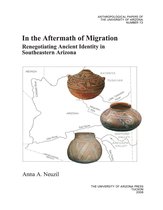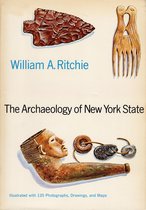Anthropological Papers 66 - Beyond Chaco Ebook Tooltip Ebooks kunnen worden gelezen op uw computer en op daarvoor geschikte e-readers. Great Kiva Communities on the Mogollon Rim Frontier
Afbeeldingen
Sla de afbeeldingen overArtikel vergelijken
- Engels
- E-book
- 9780816536641
- 15 december 2016
- Adobe ePub
Samenvatting
During the eleventh and twelfth centuries A.D., the Mogollon Rim region of east-central Arizona was a frontier, situated beyond and between larger regional organizations such as Chaco, Hohokam, and Mimbres. On this southwestern edge of the Puebloan world, past settlement poses a contradiction to those who study it. Population density was low and land abundant, yet the region was overbuilt with great kivas, a form of community-level architecture. Using a frontier model to evaluate household, community, and regional data, Sarah Herr demonstrates that the archaeological patterns of the Mogollon Rim region were created by the flexible and creative behaviors of small-scale agriculturalists. These people lived in a land-rich and labor-poor environment in which expediency, mobility, and fluid social organization were the rule and rigid structures and normative behaviors the exception. Herr's research shows that the eleventh- and twelfth-century inhabitants of the Mogollon Rim region were recent migrants, probably from the southern portion of the Chacoan region. These early settlers built houses and ceremonial structures and made ceramic vessels that resembled those of their homeland, but their social and political organization was not the same as that of their ancestors. Mogollon Rim communities were shaped by the cultural backgrounds of migrants, by their liminal position on the political landscape, and by the unique processes associated with frontiers. As migrants moved from homeland to frontier, a reversal in the proportion of land to labor dramatically changed the social relations of production. Herr argues that when the context of production changes in this way, wealth-in-people becomes more valuable than material wealth, and social relationships and cultural symbols such as the great kiva must be reinterpreted accordingly. Beyond Chaco expands our knowledge of the prehistory of this region and contributes to our understanding of how ancestral communities were constituted in lower-population areas of the agrarian Southwest.
Productspecificaties
Inhoud
- Taal
- en
- Bindwijze
- E-book
- Oorspronkelijke releasedatum
- 15 december 2016
- Ebook Formaat
- Adobe ePub
- Illustraties
- Met illustraties
Betrokkenen
- Hoofdauteur
- Sarah A. Herr
- Hoofduitgeverij
- University Of Arizona Press
Lees mogelijkheden
- Lees dit ebook op
- Desktop (Mac en Windows) | Kobo e-reader | Android (smartphone en tablet) | iOS (smartphone en tablet) | Windows (smartphone en tablet)
Overige kenmerken
- Studieboek
- Nee
- Verpakking breedte
- 215 mm
- Verpakking hoogte
- 10 mm
- Verpakking lengte
- 280 mm
- Verpakkingsgewicht
- 207 g
EAN
- EAN
- 9780816536641
Je vindt dit artikel in
- Categorieën
- Taal
- Engels
- Boek, ebook of luisterboek?
- Ebook
- Beschikbaarheid
- Leverbaar
- Land
- Verenigde Staten
Kies gewenste uitvoering
Prijsinformatie en bestellen
De prijs van dit product is 14 euro en 99 cent.- E-book is direct beschikbaar na aankoop
- E-books lezen is voordelig
- Dag en nacht klantenservice
- Veilig betalen
Rapporteer dit artikel
Je wilt melding doen van illegale inhoud over dit artikel:
- Ik wil melding doen als klant
- Ik wil melding doen als autoriteit of trusted flagger
- Ik wil melding doen als partner
- Ik wil melding doen als merkhouder
Geen klant, autoriteit, trusted flagger, merkhouder of partner? Gebruik dan onderstaande link om melding te doen.








